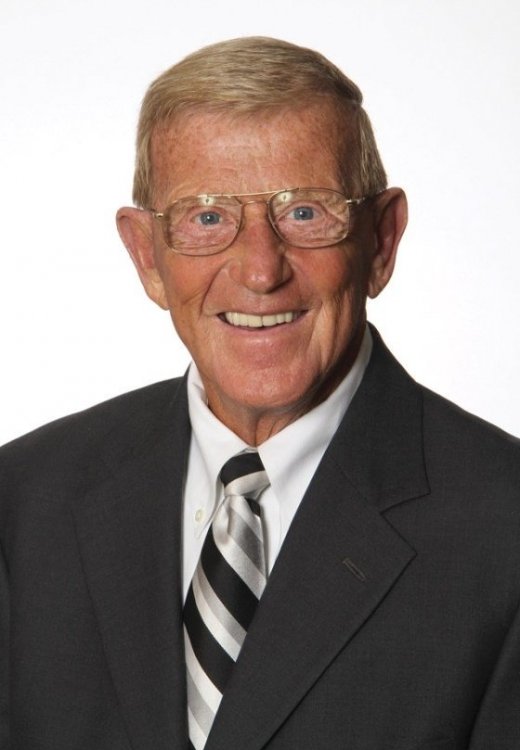-
Posts
1,689 -
Joined
-
Last visited
-
Days Won
46
Content Type
Profiles
Forums
Gallery
Store
Articles
Events
Posts posted by Lysander
-
-
-
31 minutes ago, Footballking16 said:
Zionsville over Brownsburg was a pretty big upset.
But in all-honesty, how do you expect big upsets when some of the best teams knock each other out in the first or second round every year?
I stand corrected.
Monster upset......literally tournament changing. Honestly, just never thought a Zionsville team could pull off that type of upset.
-
12 minutes ago, DT said:
I'm in Florida on temporary hiatus. The tournament is rather lackluster. Has there been a single upset of significance where a big darkhorse toppled an overwhelming favorite? I haven't seen it
I'd love to see Center Grove vs Merrillville and New Pal vs Valpo in the finals. Would also love to see Hobart and Andrean make it to Indy. Perhaps Region football is still alive afterall.
I don’t agree it’s lackluster (I enjoy the tournament like kids enjoy Christmas - just because it exists) but I do generally agree about your other points.
It would certainly be refreshing to see a State Champion in the top 2 classes come out of North Central or Northwest Indiana (and I don’t mean this as a “dig”, I am serious). Ft. Wayne has already represented well for Northeast Indiana.
That said, enjoy Florida. I am digging out of snow.
-
3 minutes ago, FastpacedO said:
I heard Lt. Harris said you should visit this place...

I’ll make sure to wear my chaps underneath my layers.
-
 1
1
-
 1
1
-
-
Semistate:
New Prairie v. East Noble
Roncalli v.Memorial
State:
New Prairie v. Memorial
Champion:
Dunno
-
 2
2
-
-
10 hours ago, BLKnights7 said:
Not very familiar with Chatard this year. More pass focused of an offense, or are they sound all around? Impressive the amount of points they score.
Most things in general about Chatard are unchanged except the offense which is probably 50/50 Run/Pass vs 100% run.
If you’ve never seen Chatard its always started with great line play (offense and defense). They will block all the way down the field and through the “penumbra” of the whistle (Bobref might get a kick out of that description). Great line play but doesn’t mean they will all be huge,
Solid skill players. Their feature back and receiver are extraordinary.
Really good defense that pursues and tackles in a gang. Again, not huge.
Great special teams.
At the top of their game, they are a lot of fun to watch on both offense and defense.
They will generally leave some bumps and bruises.
-
 1
1
-
-
23 minutes ago, Muda69 said:
That was DT’s list of traits/values associated with the “P/P mentality”......NOT the type of kids that go to a P/P.
With the exception of his mention of faith/religion (possibly including it), his “P/P mentality” list could be applied to a bunch of solid public programs (New Pal, East Central, CE, Lawrenceburg, HH, GS, SR.........I could go on and on) that show up every year at this time of the year.
Its nothing more than the traditional values/traits we have historically attributed to any great program in any sport. It’s not isolated solely to P/Ps (if it is, then HS sports is in a world of hurt).
I didn’t call out DT at the time even I thought it was a BS distinction and an insult to good public programs.
Where is DT anyway? Figured this would be catnip to him.
-
19 minutes ago, Cow Bell said:
Born on Beach Creek, Clay co KY.
Moved to Indy. Went to IPS 78 until bussing started then across town to 38.. ( finally indoor plumbing ) momma got sick, daddy got down.
Back to Beach creek a couple years.
Then finished at Arsenal Technical high schools.
Explains grammer and computer skills.
HONEST
Ok. Cool. I’m down with that.
-
 1
1
-
-
4 hours ago, George Orwell 2 said:
Here a post I made about 4 or 5 years ago.
"I must say there have been a lot of intelligent statements made in this thread and for the most part I am impressed by the civility of the discussion. Although the old public-p/p discussions (pre-Success Factor), were much more entertaining. The difficulty in this debate is that the inherent advantages of private schools simply cannot easily be separated from the earned advantages of certain private schools. Everyone recognizes that there are certain inherent advantages but everyone also recognizes that there are earned advantages that certain schools (many, but not all, private) have attained.
Contrary to many views expressed on the forum, there aren’t one or two or even a few specific variables that one can point to which lead to long term, significant football success. The fact is that the variables involved are so numerous and so complex that it is nearly impossible to identify all of them or to determine how much each lend to the success of the program. In addition, some variables may lend more to the success of certain programs and other variables may lend more to the success of others. Also, some variables are inherent in a community and others are developed over time.
The attribute which has the most direct correlation with football success is enrollment size. The size of the school has a stronger correlation with having a better football team than any other variable. If you use Sagarin rankings as the measure of quality, larger schools, on average, are consistently ranked higher than smaller schools. As we all know, although size matters, it isn’t necessarily the determining factor. In fact, there are numerous variables which seem to have a correlation to football success but are not absolute determining factors. How about simply being a private school? On the other hand, there are many private schools that are not very good at football at all. What about being located in a densely populated area? Once again, lots of schools located in densely populated areas aren’t very good. The opposite is also true. There are some very good rural programs. Being Catholic versus other religious schools versus completely secular private high schools? Same thing. Some Catholic schools are good, some are not, some non-Catholic private schools are good, some are not. There also seems to be consensus that average household income has some effect on success. I don’t know if there are any studies on this but I question the significance of this variable. My suspicion is that at some income levels the difference isn’t very significant. For instance, the difference in the success effect between enrollment populations with very low average incomes as compared to slightly above average incomes is probably much greater than the difference between enrollment populations with average incomes versus above average incomes. In fact, there is probably a point at which increasing income levels decreases football success as very high income households may dissuade their children from football participation.
Of course all of this begs the question as to why certain schools have achieved a level of dominance over the others? I have read some posts which insist that the Catholic schools (or more correctly, the Catholic schools which are dominant) have better players than their private school counterparts. For the sake of argument, let’s assume that that is true (at least at game time). In fact, let’s assume that this is true of all schools which have experienced significant football success regardless of whether they are public or private. Why is it that the athletes on the field would be better at one school of similar size than another? The obvious answers are 1) a higher percentage of the population desires to play, 2) they start playing earlier, 3) they receive good instruction from a young age, and 4) the players develop a team oriented identity from an early age.
When you get down to it, football (all sports really) is a math game. The more students a school has to choose from, the more quality athletes will be in the pool. Why does the German national soccer team beat the US national team every time they play? The German national team has better players than the US national team. Why? The German national team has the 25 best athletes in the country on the team. They started playing at a very young age. They received good instruction from an early age, they developed a team oriented identity when they were very young, and they devoted themselves to soccer success. The US national team doesn’t have the country’s best athletes on the team. There are some very good athletes on the team; some that may be the top athletes in the country. But not all of the best athletes in the US play soccer, nor do they get the same level of instruction as German youth players, etc.
So the first, and probably most important variable, is that every one of the good athletes in the community must have a strong desire to play football from an early age and to devote themselves to the success of their team. Understand that this variable isn’t inherent in a Catholic school, a public school, a city school, a country school, a rich school, or a poor school. This is a variable that is a by-product of the identity of the community.
Certain communities value football participation (and by extension, success) more than others. The Indianapolis Catholic community (of course, there are others but this is the one of which I am most familiar) has taken great pride in their football success for generations. Football was a sport that lent itself to the blue collar, mostly immigrant, and less sophisticated Catholic communities in the early part of the 20th century. At the time, football was a poor man’s sport. It was tough and violent and there were a lot of serious injuries. The type of activity that poor, uneducated immigrant kids and young adults would not be dissuaded from. It just so happened that there were a lot of poor Catholic kids in Indianapolis at that time and a great many of them starting playing football. That developed into football success and a certain pride what went with it. In a community that had no other way to favorably compare themselves to the majority, athletic success, especially in football, became part of its identity. The resulting pride in that success was passed down from generation to generation. It became part of the culture of Catholic school education.
Now, this history isn’t unique to the Catholic community. There are other communities throughout the state, which are not necessarily Catholic, which have developed a “football culture.” The fact, though, is that it takes generations (not years or even decades but generations) to develop the type of football culture that leads to dominance at the high school level. But it is this “football culture” that most strongly drives the success of the community’s football programs.
The result is that when teams like Bishop Chatard, Roncalli, Cathedral, Andrean, LCC, etc. take the field, the 50 or 60 best athletes in the school are on the football team. Not only that, but they have been preparing to play for the high school team for years before they even get there. Most of the kids have played together for eight to ten years by the time they are seniors. From the time they are in the 3rd grade, the value of football success starts to be positively reinforced by the entire community. What position do you play? Did you win this weekend? Congratulations on your city championship. Subtle interactions like this with the adults in the community constantly reinforce the importance of football success. (This isn’t to say that other things are not reinforced; academics, charity work, appropriate behavior, and participation in the church and school are all reinforced as well. But when it comes to athletics, football is important in the Catholic community. It’s just the way it is.)
That isn’t true for all schools where other sports such as basketball, soccer, baseball, etc. may draw athletes away from football. That also isn’t true of schools where the community isn’t athletics focused or in communities where the students are expected to work at home or have other responsibilities. The football culture is the single largest advantage that any school can have (excluding enrollment). But there isn’t one variable that one can point to which defines it. Some of the variables are inherent and some are earned. But it is impossible to separate the variables that give one community a strong football culture and others not.
Now, in my opinion, the most important manifestation of this culture is a very strong youth program. The most direct relationship for success is the quality of the youth program in the community. One can look at non-Catholic schools who are similar in size and circumstances to see the difference in success based on the quality of youth programs. There is a reason that Indpls. North Central is consistently inferior to Warren Central. Warren’s youth program is very good. North Central’s is not. I would bet that there are very few successful programs who do not have a well developed youth program.
Another aspect of football, in general, that is very difficult to explain but is probably inherent in football success is that, for some reason, football lends itself to dominance by small groups. Look at past champions of NCAA Div II, Div III, NAIA, and even Division I to a lesser extent. A small group of schools, usually around 10% – 20% win a significant majority of the championships. This aspect of football seems to be inherent in the sport.
What we will inevitably find is that the variables which lead to football success are many, varied, and non-linear. Ultimately, the “system” which creates the success is extraordinarily complicated; much too complicated to accurately model. Nassim Taleb, in his work, The Black Swan, spends considerable effort discussing the attempts by people (mostly economists) to model systems which are extremely complicated and are ultimately based on human behavior. The one thing all of the models have in common is that they inevitably fail (see e.g.: financial crisis 2008). I believe that Mr. Taleb would probably say that this system is simply too complex to attempt to model.
I can certainly see why the IHSAA would want to avoid the difficult discussions involved in attempting to parse out which variables should be used, and to what extent, to determine class realignment. So, what we are left with is the success factor system. All of the difficult variables (the causes) are eliminated and it is only the end result, regardless of how it is achieved, that is used to realign the classes. Is it an honor or a punishment? The beauty of that is in the eye of the beholder. I think that the Success Factor with a few tweaks can resolve most of the issues. For instance, I’d like to see 4 year cycles instead of 2 and fewer points needed to stay in a higher class. But, this is a system that will work much better and more fairly than multipliers, automatic bumps, or a separate tournament.
Finally, it is important to remember that we are dealing with very small sample sizes. The current class system has only been in place for just over 30 years. There were periods of time where public schools had much more success than they are having now. Over the next 30 years, some programs will improve over that time and some will decline. The cultures of communities change over time, populations shift, incomes are redistributed, and priorities change. In a generation, there could be a completely different discussion which dominates this forum, such as why the participation in football has diminished to the point where football is nearly irrelevant. I fear that that is our greater enemy. As we argue with one another over the thing we enjoy so much, it is disintegrating around us."
GO,
I read this back when you originally posted it and in rereading it again, it remains probably the most thoughtful post I have ever seen on the matter.
-
 1
1
-
-
-
15 minutes ago, Cow Bell said:
We put fools in our highest office all the time.
If I could only speak like ( and spell ) like Lysander I would have a cult following.
Every once in a while even DT has something intelligent to say.
Fool or not.
Honestly, it’s time to fess up.
You’re some kid at Chatard bored in computer class (don’t know if they actually have a computer class at Chatard since that would cost $$....maybe a Cathedral kid, then) having some fun at my expense.
Seriously, time to be honest.
-
 1
1
-
-
Just now, Titan32 said:
My comment was actually tongue in cheek in response to the clear command that our bovinian friend has over the english language.
Oops, sorry....definitely too subtle for me.
That said, I DO think there are advantages though, I have always admitted that.
As George Orwell here has pointed out, the Success Factor has kind of tamped down all of those old conversations/discussions.
-
 1
1
-
-
Just now, Titan32 said:
Now will you guys finally admit there are certain...obvious...advantages to attending a P&P? (cough, cough)
Hell yes! I’ve always said there are advantages. Just not the ones generally cited.
Many of the advantages are the same as you would have found 30-40 years ago in small town schools. Changing times have, to a degree, left us with the P/Ps as analogues of those small towns. Multi-generational kids (good athletes go to college, return “home” and the next generation starts all over), involved parents who keep an eye and their kids...and yours, community and generational pride, respect for coaches, etc.
Part of the reason I respect places like HH and GS is because they fit that very model....but even then it’s hard because so many kids once they leave home just don’t come back.
In my case, I never went back because there wasn’t much work for gigolos in Franklin County.
-
 2
2
-
 2
2
-
-
18 minutes ago, Cow Bell said:
.......schools that hold there enrollment down to pacific numbers to better them shelf in football.
You truly have a gift. Nicely stated.
-
 1
1
-
 5
5
-
-
Just now, BTF said:
You're coming a long way. I hope the Cadets don't mercy rule you guys after two quarters.
I expect a good game.
BTW, that 2016 Concordia team was a monster and doesn’t get enough credit historically. It embarrassed a lot of quality 3A teams.
-
-
I may have to put this up for a car vote on the way. Either way, I am appreciative of all the recommendations.
-
22 minutes ago, Temptation said:
To be honest I wasn't planning on going to New Pal Friday night but I might have to now. Looks like there could be two games going on...
Suggest you get that “tailgate” invite.
Once there, be sure to hold your pinkie finger out after you fill up at the champagne fountain.
Talk about your home on Geist a lot........and your vacation place on Sanibel. Gotta bring up Sanibel....
You’ll fit right in (these tips work at HSE gatherings also).
Feel free to PM me for any other social tips.
-
 3
3
-
-
3 minutes ago, Cow Bell said:
Last year I went to Triton central. They had a team that only comes along ever so often.. A few mistakes early by the other team and Triton was a head...but time was not on their side..the other team was loaded with athletes...you know what happens next...now no kid is recruited by Triton...even with Open enrollment what kid will drive out to the cornfields and go to school there. A small schools hope of making it to LOS are spoiled. WHY MAY I ASK... Lysander care to spell check for me
$400/hour for consulting.
Gotta pay that tuition.
-
 2
2
-
 2
2
-
-
30 minutes ago, Cow Bell said:
A boy from the Ville going to get onto someone who hit one to many buttons.
Even worse......Metamora. I had to sneak into the Ville before the sun came up.
-
6 minutes ago, Cow Bell said:
......STUPID IS HAS STUPID DOES!
Nice job there.
-
 1
1
-
 11
11
-
-
Every other year in HS football, I would be on the field in Greyhound green and white to receive a Tiger butt-kicking.
Even so, it’s a special place. Dick Meador was prowling the sidelines then rather than being the namesake.
Two great traditions playing at a classic venue.this weekend.
Saturday, huh? I may have to ask my better half permission to attend.
She used to be on the sidelines back in those days, as well, in her green and white Greyhound cheerleader uniform.
Back in the Jurassic era.
-
 2
2
-
-
A word of advice to Mooresville.
For the love of God and all that is holy, don’t, DON’T drive down to Enlow and play on a Friday!
-
 4
4
-
 1
1
-
-
25 minutes ago, kdets89 said:
Great pregame dinner option is The Acme Bar & Grill on East State St., minutes from Concordia. Smoked wings are terrific, and they have the best breaded tenderloin in the state.
All the above suggested options sound good (Thanks guys) but, honestly, if I can get great breaded tenderloin AND a bowl of good chili then I’m probably sold. So how’s the chili at the Acme?
-
 1
1
-







There was a time....
in The Indiana High School Football Forum
Posted
Public Service Announcement.....leave the wives and girlfriends at home Friday night....if you want them to return.